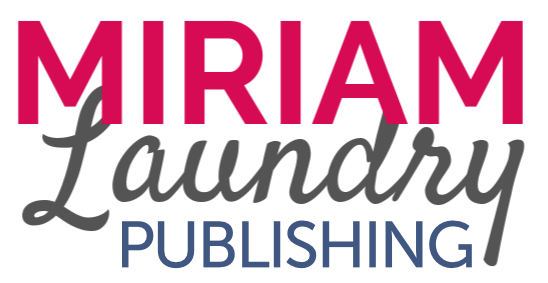When done well, a rhyming book can stay with a child forever. My mind immediately thinks of Dr. Seuss. Famously known for his inventive rhymes and fantastical characters, he is a perfect example of how a well-crafted rhyming book can stay with a child forever. Even today, many of us can probably recall lines from his iconic books like The Cat in the Hat; Oh, the Places You’ll Go; and One Fish, Two Fish, Red Fish, Blue Fish.
A true poet has a natural sense of play when it comes to verse. They are able to have fun and create magic. However, there is a common misconception that the best children’s books are written in rhyme. Because of this belief, many first-time authors feel drawn to rhyme instead of focusing on the story and message at hand.
Maybe you are considering using rhyme and rhythm in your children’s book. While it can certainly be engaging, there are challenges to writing children’s books in rhyme. Understanding these limitations can help you weigh your options on whether writing in rhyme or prose is the right choice for your story.
Rhyme vs Prose
Rhyming is a literary device that involves the repetition of similar sounds throughout a story. One of the most common types used in children’s books is end rhyme—where the final word of each line rhymes. For example, “There once was a cat who owned a red hat.” This technique is a form of poetry that creates a musical quality and adds a chant-like pace to a story. Rhyming is often enjoyable to hear when done effectively.
Prose is a form of writing based on our everyday spoken language, most often used in novels, short stories, and essays. It is more straightforward and doesn’t rely on rhyme or meter to progress the story. For example, “The princess lived in a magical kingdom, where her days were filled with adventures.” This line follows the regular use of grammar, punctuation, and sentence structure.
Four Things to Consider Before Writing in Rhyme
Though rhyming has its unique strengths, there are factors about it that can influence the quality of your overall story. Carefully consider these four thoughts before committing to rhyme.
1. Rhyming Can Limit Vocabulary
When writing in rhyme, authors often try to find words that match with the previous line’s rhyme. Every word in your children’s story should have meaning, as you only have a limited space (and attention span) to get your message across.
However, with rhyming, writers sometimes resort to words that don’t quite fit—also known as "throwaway words." This need to find words that rhyme can quickly restrict your vocabulary and limit your ability to fully express your ideas in an appropriate manner.
For example:
Bumble bee, bumble bee
Big, black, and yellow.
Look where I’m pointing,
Now there’s a fine fellow.
In this example, the word "fellow" was chosen to rhyme with "yellow." However, if the author wasn’t restricted by the rhyme, they might have selected a word that tells the reader more about bees or their habits.
If you are wondering if your rhyme fits, ask yourself if the chosen word is essential to the story. Does each word move the story forward, or is it only there to complete the rhyme?
2. Rhyming Can Sometimes Overshadow the Story
The heart of any great children’s book is the story. Yet, when focusing on rhyme, it can be easy to get so caught up in creating the verse, that the message gets lost. While your rhyme will be captivating, make sure it also remains supportive of your overall narrative.
For example, if you're telling a story about a boy who loves adventure and you write, "He sailed across the ocean, so wide and grand, then spotted a monkey playing in the sand," the rhyme works, but the monkey may have no relevance to the plot. In this case, the rhyme is prioritized over keeping the story on track.
3. Rhyming Doesn’t Always Equate to Smooth Reading
Unlike musical rhymes, written rhymes need to stand on their own. Readers may not emphasize syllables or sounds the way you intend, so the rhyme must work well on paper.
This can be challenging to perfect because the goal is for a reader to easily understand your verse without stumbling or needing to retrace their steps to find the pattern. If the rhythm isn’t clear, the reader may have to pause, which can break the flow of the story. This can lead to a less enjoyable reading experience.
4. Rhyming Can Be Hard to Translate
Words that rhyme beautifully in one language may not rhyme in another. Because of this, rhyming books often face challenges when being translated into other languages. This may cause international publishers to hesitate in translating your book, which could limit your international reach and cut down on potential sales. If you hope to see your book reach young readers in different languages, this is worth considering when writing.
Aspiring author, I share these insights not to discourage you from writing in rhyme, but to make you aware of some of its limitations in children's books. Rhyming is not the only way to create a book that is engaging and exciting for children. I encourage you to also consider the benefit of writing in prose: the ability to focus on storytelling without the constraints of rhyme.
With that said, if you have always dreamt of writing a rhyming story, go for it—it absolutely can be done! The best approach, whether rhyme or prose, is the one that allows the story within you to flourish.
Once you have your first draft complete, it is time to transition to editing. Download our FREE Editing Checklist and look over your manuscript to check for common mistakes before handing it over to a professional editor.
Pre-Edit & Save on Your Budget:
Editing Checklist for Children's Books
